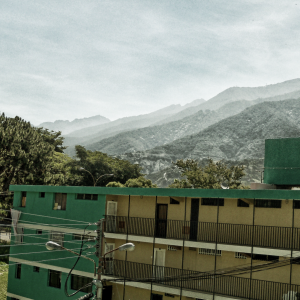Federal Water Tap, August 30: White House Climate and Migration Report Is Delayed
The Rundown
- A climate and migration report ordered by President Biden is not yet complete.
- U.S. Fish and Wildlife Service proposes endangered species status for Texas mussels.
- The EPA announces $25 million in drinking water grant funding for small and disadvantaged communities.
- An intensive DOE research project aims to better understand the interactions of air, land, and water in the American West.
- Global data from last year shows the extent of the planet’s rising fever.
And lastly, U.S. representatives from western states ask President Biden to declare a drought disaster.
“This drought could have long-term impacts on the food supply, wildlife, and livelihood of Americans in the West as these conditions persist.” — Text of a letter signed by Rep. Joe Neguse (D-CO) and 31 of his colleagues asking the president to declare a drought disaster in the West. Ninety-five percent of nine western states are in some stage of drought.
By the Numbers
$25 Million: Grant funding announced by the U.S. Environmental Protection Agency for drinking water improvements in small and disadvantaged communities. To participate, states have to submit their grant applications by June 30, 2022.
News Briefs
Endangered Texas Mussels
In a decision that could affect water allocation in a fast-growing region, the U.S. Fish and Wildlife Service is proposing to list six species of central Texas freshwater mussels as endangered or threatened due to water pollution, inadequate water supply, and fine sediment in streams.
The mussels in question are absolutely stupendous expressions of descriptive nomenclature: Guadalupe fatmucket, Texas fatmucket, Guadalupe orb, Texas pimpleback, and false spike. These five would be listed as endangered, while the Texas fawnsfoot would be labeled as threatened.
If the proposed listing goes through, nearly 2,000 miles of river in 61 counties would fall under the species’ critical habitat. Such an expansive designation would require changes in land and water use.
Comments on the proposal are being accepted through October 15. Submit them via www.reguations.gov using docket number FWS-R2-ES-2019-0061.
In context: How the Fate of Texas’ Endangered Mussels Could Affect Water Usage Statewide
Climate and Water Observation in the West
In an attempt to gain better insight into the relationship between air, land, and water, the Department of Energy is bringing state-of-the-art observational tools to the Colorado River headwaters.
The SAIL project, after investigating aerosols, clouds, precipitation, heat fluxes, and other factors, aims to produce better models of the physical world and therefore more accurate forecasts of water availability.
Data collection will begin in September in Crested Butte, Colorado, and extend for nearly two years, through June 2023.
Studies and Reports
California-Nevada Drought Update
It’s still going strong. That much is obvious from the vast range of data sources that federal agencies compiled in their recent update of drought conditions in the two states.
The data list includes temperature, precipitation, vegetation, reservoirs, streams, and fire potential . The three-month outlook is no better: warm and dry.
State of the Climate in 2020
Federal scientists directed this compilation of Earth’s vital signs from last year. The data are not good.
The Arctic sea ice minimum (the lowest point of the year) was the second-lowest on record. Heat in the mid-level of the oceans was a record high. Lakes continued to warm, but not uniformly. (Lakes in northern Europe and northern Canada were colder than usual.) The amount of land area experiencing extreme drought was the third highest. And 2020 was one of the three warmest years since recordkeeping began in the late 1800s.
On the Radar
Climate Migration Report
A report on how climate change influences human migration that President Biden ordered earlier this year has been delayed.
“We are actively working on this report to the President, and expect a final version, or summary thereof, will be made public by the fall but we do not yet have a timeline to report yet,” a senior administration official wrote in an email to Circle of Blue.
The executive order on February 4, 2021, instructed the national security adviser to submit a report to the president on climate change and human migration. The report is supposed to address international security implications, options for resettling people displaced by climate change, how U.S. foreign aid could prevent larger numbers of migrants, and which partnerships would be most fruitful.
The report was due in 180 days, a date that passed in early August.
In context: Droughts Push More People to Migrate than Floods
Federal Water Tap is a weekly digest spotting trends in U.S. government water policy. To get more water news, follow Circle of Blue on Twitter and sign up for our newsletter.
Brett writes about agriculture, energy, infrastructure, and the politics and economics of water in the United States. He also writes the Federal Water Tap, Circle of Blue’s weekly digest of U.S. government water news. He is the winner of two Society of Environmental Journalists reporting awards, one of the top honors in American environmental journalism: first place for explanatory reporting for a series on septic system pollution in the United States(2016) and third place for beat reporting in a small market (2014). He received the Sierra Club’s Distinguished Service Award in 2018. Brett lives in Seattle, where he hikes the mountains and bakes pies. Contact Brett Walton





Leave a Reply
Want to join the discussion?Feel free to contribute!